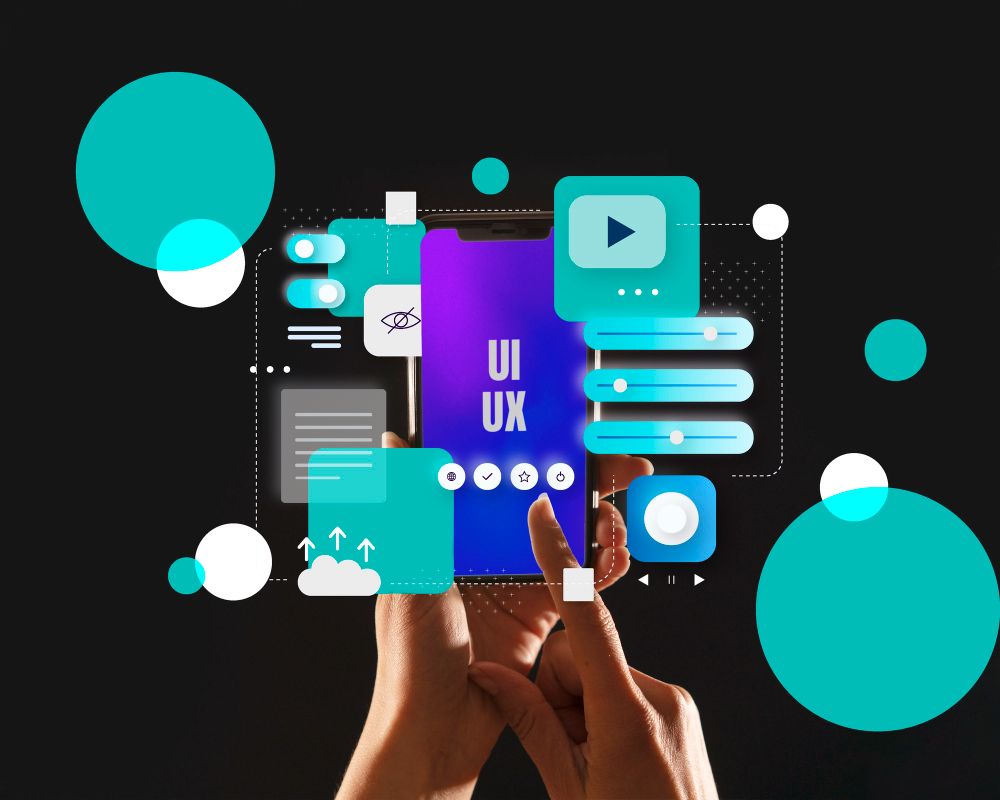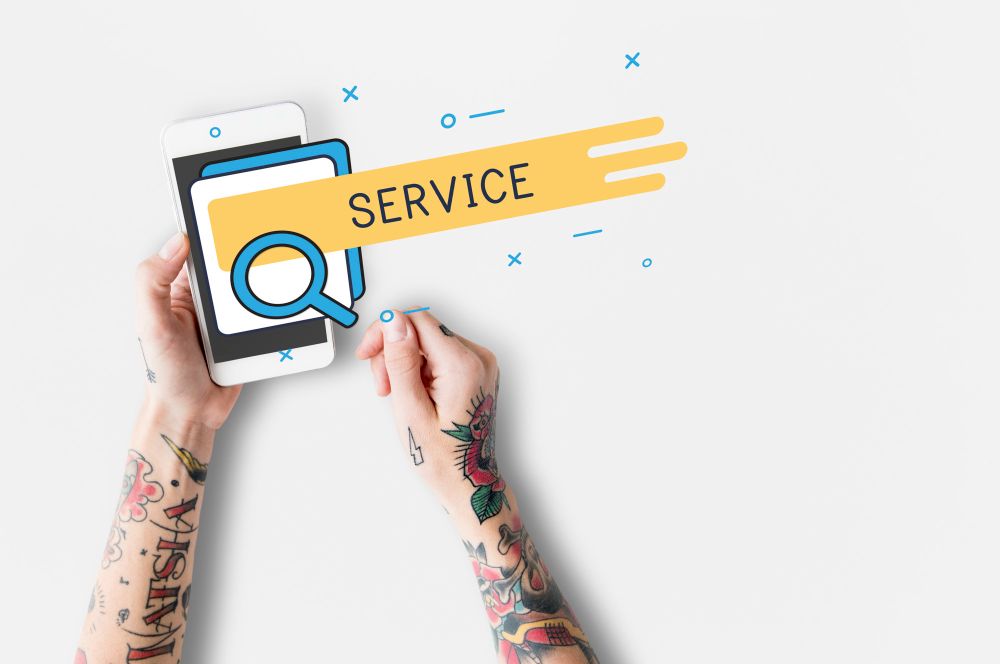Due to the highly competitive landscape, companies need to outshine their rivals and attract a substantial user base in a limited time. To achieve this, embracing one of the prominent approaches is essential: User-Centered Design, Human-Centered Design, or Service Design.
Although these methods have distinct characteristics, they all share a common focus on the user and the product, but in a different way. Therefore, choosing the proper methodology isn't solely about considering pros and cons; it depends on your objectives and what you aim to accomplish with your product. Equally important is where the user stands in your user journey and the design process.
These methodologies offer diverse ways to succeed. Each offer's advantages and disadvantages don't solely determine the best fit for your company. Instead, you have to choose based on your specific goals, the user's role in the design process, and the whole user journey.
User-Centered Design (UCD)

What sets User-Centered Design apart is its unwavering focus on the user. This approach places the user at the heart of the whole procedure, almost as if the user is actively shaping and creating the product. Users' valuable insights and contributions are pivotal throughout every step of this method.
To excel in User-Centered Design, users should take center stage. Their behaviors, desires, challenges, and objectives are all vital for crafting the perfect product. This approach frequently highlights pain points addressed within the product. This calls for a solid understanding of the market and competing products, helping to identify where users are dissatisfied and why these pain points persist.
The user's voice and input are crucial at each stage of the process. Research, design, testing, implementation, and iteration are typically the stages of User-Centered Design.
The 5 Stages of User-Centered Design
Research
Research is the most critical step in User-Centered Design, and even at this early stage, user input is of the utmost importance. Interviews with potential users, like stakeholders, are essential to conducting research. Potential users share their concerns, difficulties, and requirements in these discussions. Although they are far from the final product, the insights gained from these interactions shape the initial plans and designs. Therefore, various designs are generated to advance to the subsequent stage. In this stage, businesses comprehensively understand user demographics, behaviors, and usage context to make informed decisions throughout the design process.
Design
Based on the insights acquired in the previous step, the Design stage entails the creation of solutions based on users' opinions, pain points, and general previous discussions. In this step, businesses visualize and create the first sketches of the user interface and the overall user experience using wireframes and prototypes. However, the company does not end with a final design or product but experiments, tests, and creates multiple design versions for user feedback.
Testing
During the Testing stage, user input is vital again, as companies show users the results, such as potential design mockups, to collect feedback on the design's user experience, like usability and functionality. There are multiple paths to take here. One strategy involves presenting users with multiple options and allowing them to select one. On the other hand, A/B Testing is a controlled testing method in which users are divided into groups, each providing feedback on a specific version. This may consist of Version A, Version B, etc.
Implementation
Following user feedback collection, the fourth step involves refining the product based on user insights. This involves arriving at a specific design or strategy for the final product based on the feedback of potential users. However, this is not the journey's end, as the product continually improves, changes, and evolves.
Iteration
Iteration is a cyclical process that consists of all the previous steps. Based on ongoing customer feedback, businesses continually adjust, refine, and update their final result. This constant evolution ensures the product gradually aligns with the user's requirements. The Iteration step entails returning to previous steps to refine and enhance the product based on new insights and feedback. This is how the company handles updates, renewals, and other enhancements, receiving them daily from the users.
User-Centered Design is a dynamic process where the user's input guides every stage, resulting in a product that truly resonates with its users.
To be more specific and understandable, two huge products operating in User Experience Design are Booking.com and Mailchimp.
- Booking.com, like many other successful online platforms, uses user-centered design as a fundamental approach to creating a user-friendly and engaging experience for its customers, receiving constant feedback from customers and users, conducting continuous A/B testing, and altering the experience and platform so that they are more appealing and loved by customers. Booking.com wants to target a specific population segment, e.g., travelers, so User-Centered Design is the best approach.
- By employing User-Centered Design, Mailchimp continuously improves its platform to meet the needs of its users, resulting in a more engaging, user-friendly, and effective email marketing and automation solution. Through its beloved mascot, MailChimp uses User-Centered Design and personalization to attract its users. By appealing to users' emotions, products can transcend their utility status.
Advantages of User-Centered Design
- Since the product was created by the user for the user, it provides high user satisfaction and usability, as well as a superior user experience. You won't need training courses, etc., since the product will be designed so that users can intuitively understand what they need to do since it will be what they require.
- Enhanced product adoption and user participation.
- Reduced risk of design flaws and pricey revisions, as you constantly review user feedback and comprehend what they want at every step, so there is no possibility of error because you are in constant communication with them.
Disadvantages of User-Centered Design
- It is a model intended for a specific subset of users, so only a few branches can utilize the product. For instance, if you create a product that solves shift scheduling issues in the food industry, only those professionals will use it. However, considering the number of professionals in this branch, we conclude that we address many individuals but only one branch.
- The iterative process never concludes, even if a product has been released for years. Constant feedback is required to ensure the product is as good as possible. Airbnb, which follows this model, constantly updates, renews, etc., in order to be as user-friendly and ideal as possible.
- Since the objective of this methodology is not innovation or originality but rather the facilitation of users in a way that is simple, straightforward, and easily understood by them, excessive reliance on user feedback may inhibit innovation.
Human-Centered Design (HCD)

Human-Centered Design exemplifies Empathy, Inclusion, and Emotional Design. It is a holistic approach to design that provides solutions for our society's most pressing issues. So, using this design means improving and resolving new or additional problems that may affect the environment, vulnerable social groups, and much more.
Moreover, HCD is experiencing significant growth in a context where sustainability and environmental protection are substantially growing. Thus, the companies that choose the methodology above seek to effect change and introduce something novel, which they will achieve with their product.
This design's core is a social group, a city, or a country in general. Users who operate the product will improve their lives or enhance the environment, and society will change. It is crucial to thoroughly analyze users' psychological, emotional, and cultural aspects to determine what concerns society and how we can provide decisive solutions.
Consequently, during the design process, we should listen to the users, respect them unconditionally, and not reject anyone, i.e., we should prioritize empathy and inclusivity and give a voice through our product to those who require it. People's emotions, problems, and needs are foregrounded more humanely and pleasantly. We care not only about providing solutions to pain points but also about bringing significant change to society and people's lives.
Two prominent examples of Human-Centered Design are Spotify and Duolingo, two products that stand out and have paved the way for others to act decisively using this approach.
- Spotify began with this pricing structure because its low prices made music streaming accessible to a large population. Thus, Spotify succeeded by empathizing with their users' struggle to pay for music from disparate sources and developing a solution we could all support. The vision was to be a simple, accessible, and helpful platform where everyone can listen to their favorite music affordably, and the Free Version of Spotify is also based on this vision.
- Regarding Duolingo, "What I wanted to do was create a way to learn languages for free," says von Ahn, the originator of Duolingo "If you look at language learning in the world, 1.2 billion people are learning a foreign language, and two-thirds of those people are learning English so they can get a better job and earn more. The problem is that they don’t have equity and most language courses cost a lot of money.” In a few words, he solved a social problem, namely that only some have easy and affordable access to learning foreign languages, by developing the application.
Advantages of Human-Centric Design
- A deeper understanding of user emotions and cultural contexts so that we are more sensitive and concerned with the human being.
- Creation of products that resonate on a personal level with users and strengthen and improve their consistency.
- Potential for addressing systemic inequalities through design, thereby making the company a catalyst for social change and expressing the social responsibility of all businesses.
Disadvantages of Human-Centric Design
- Complexity in integrating diverse user perspectives and general difficulty in developing a product that will affect the entire or a portion of the population.
- Extensive research demands considerable time and resources.
- Fears that all the research and analysis will remain in this initial face, leaving the requester unsatisfied with the product.
Service Design

Service Design is an all-encompassing service experience that provides products and services for everyone, thereby resolving common issues and pain points. One such product is Slack, which targets users from various industries and solves the fundamental communication problem. This issue is essential for all professionals who wish to communicate with clients or colleagues.
In addition, Service Design involves the integration of multiple touchpoints and channels in service delivery and undergoes numerous iterations. In a few words, businesses incorporate more and more features that strengthen and differentiate the product, making it more appealing to the various branches. Thus, a product that focuses on communication between coworkers can also focus on file storage, offering additional features that the company knows are valuable to the professionals it serves.
Consequently, continuous cooperation with various stakeholders to integrate experiences from multiple fields is required to achieve the abovementioned goals. Thus, we should be cautious with the feedback we receive, as only then can we be certain that our product is not geared toward a professional group but is ideal and desired by all users to whom we market it.
Zoom and Slack are two products that come to mind when considering Service Design. Both of these products simplify and expedite communication by providing an environment that is user-friendly, simple, and accessible to all professionals without difficulty. Thus, they are two products that all professionals in all nations find helpful.
Advantages of Service Design
- Comprehensive enhancement of end-to-end user experiences through ongoing discussion with a large number of users from different branches.
- Identification and optimization of service processes' pain points for numerous user groups.
- The development of consistent and memorable service interactions.
Disadvantages of Service Design
- Difficulties can arise when trying to bring together various departments and stakeholders. This can lead to confusion and an inability to find common ground among professionals, which might result in creating a product that caters more to a specific group.
- Implementing the service design can become complex due to the interconnected nature of its different parts.
- Different groups of users might have varying preferences for changes. Balancing these differing desires can take time and effort, making it hard to satisfy everyone.
There is no conclusive answer to which methodology should be favored the most, as each has advantages and disadvantages. Companies should choose the best fit for their needs and target users.
User-Centered Design is anticipated to be the most significant trend shortly, as it aligns perfectly with the most important trend of 2023, personalization and personalized experiences. Users need products and services designed specifically for them, and they derive emotional value from this, making them feel unique.
On the other hand, Human-Centered Design is the optimal solution if you aspire to create a product that will change the world or society. This specific methodology focuses on products with particular objectives, audiences, and fields of action.
Service Design is more versatile. It addresses products that, in turn, target a large portion of the market from various branches and are designed to solve problems that affect a large proportion of users.
You can schedule a discovery call with us, Viable, to discuss the specifics of your product and learn more about the strategies above if you are still determining which of the approaches is best suited for you or if you want an ally in this journey. Remember that you can use a hybrid approach combining UCD, HCD, and Service Design elements.
However, if we had to choose a favorite, we would go with User-Centered Design, which is the most modern and will see a significant increase in the coming years. Why not prevent the upcoming trends and carve your path based on them?



